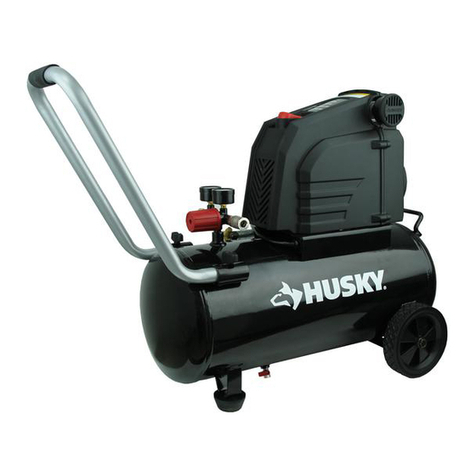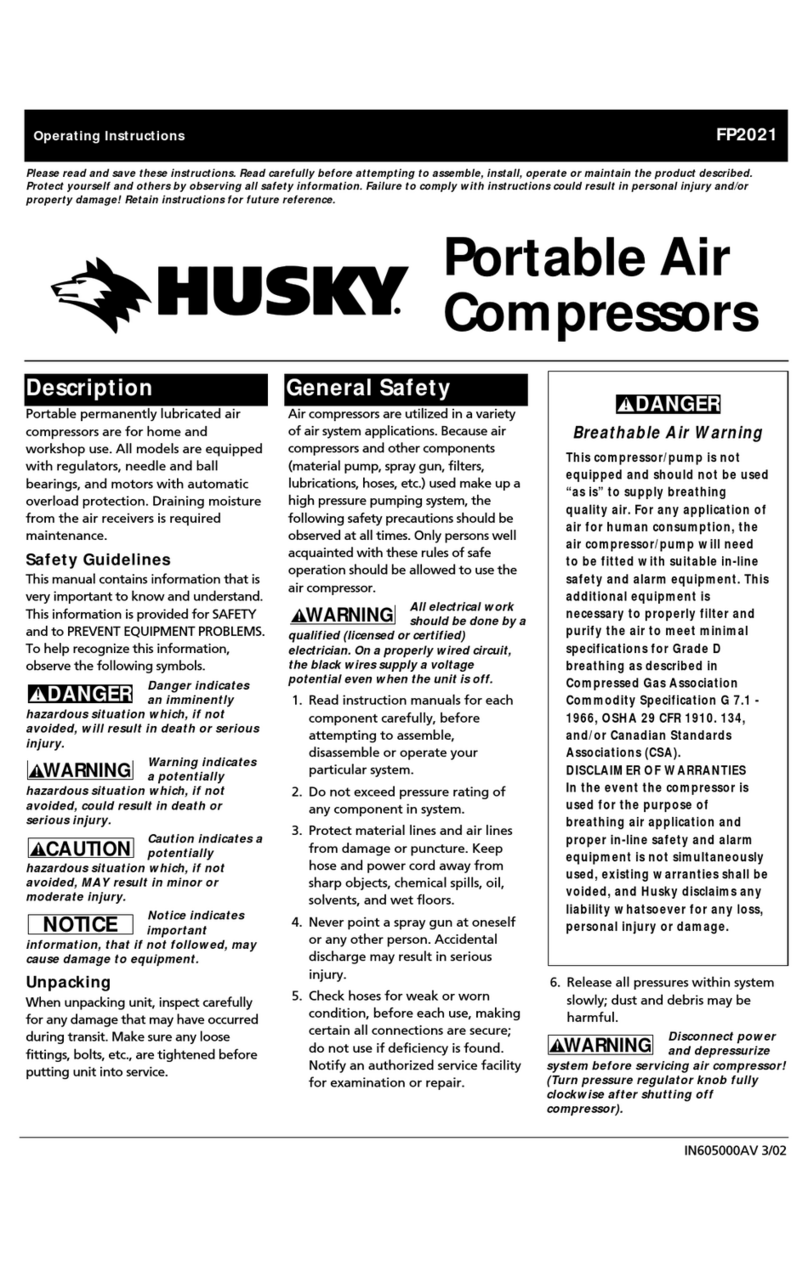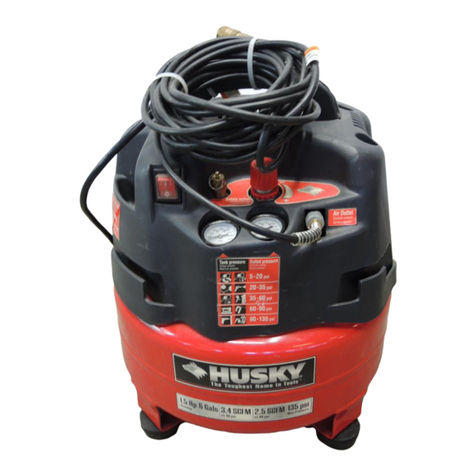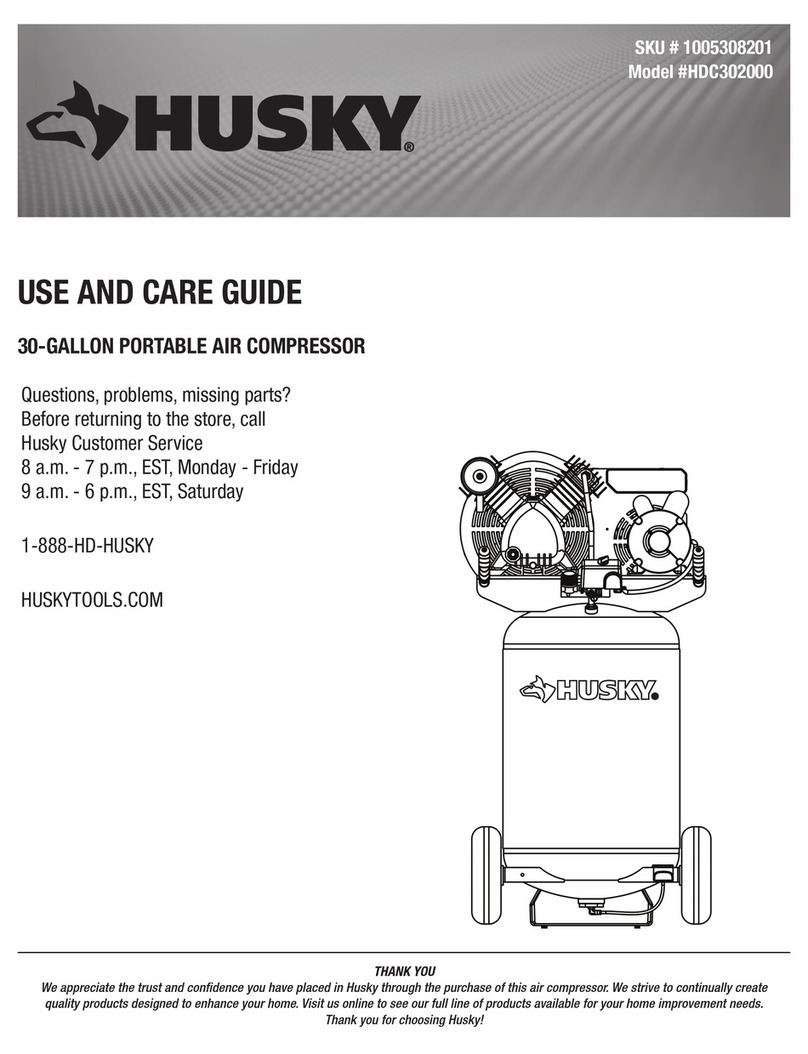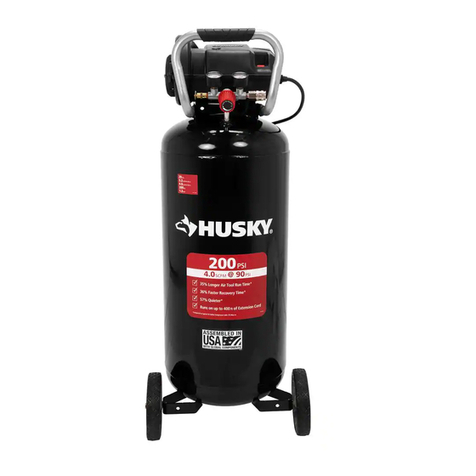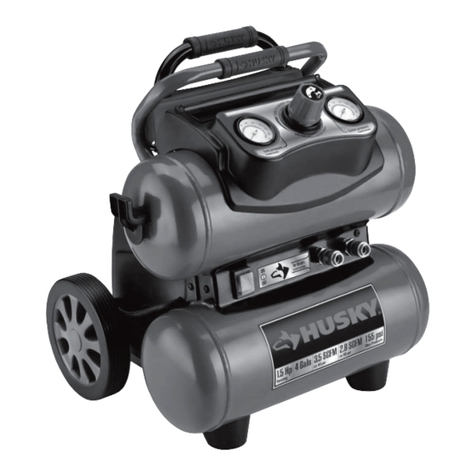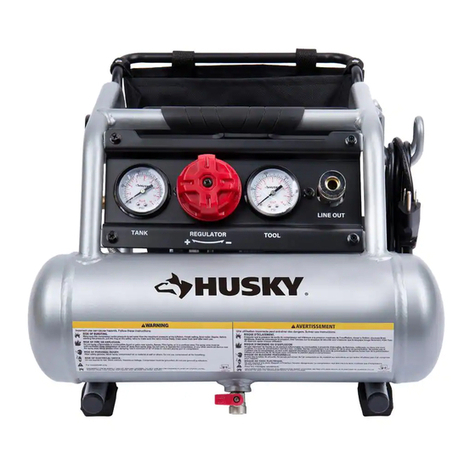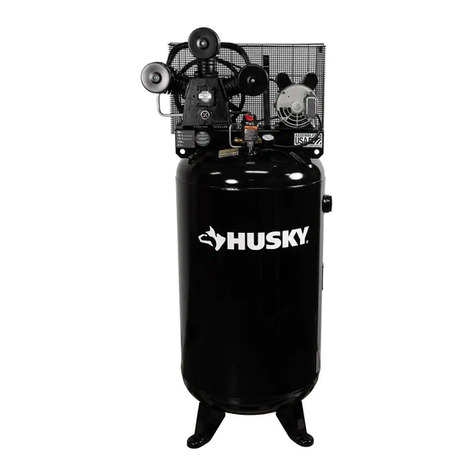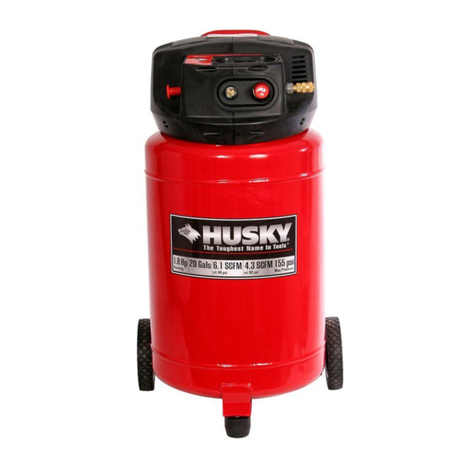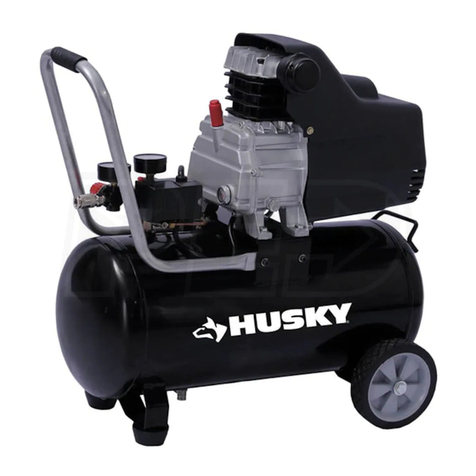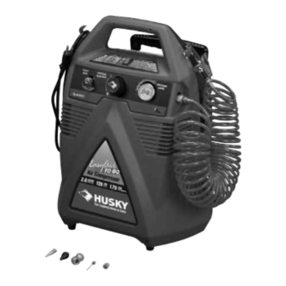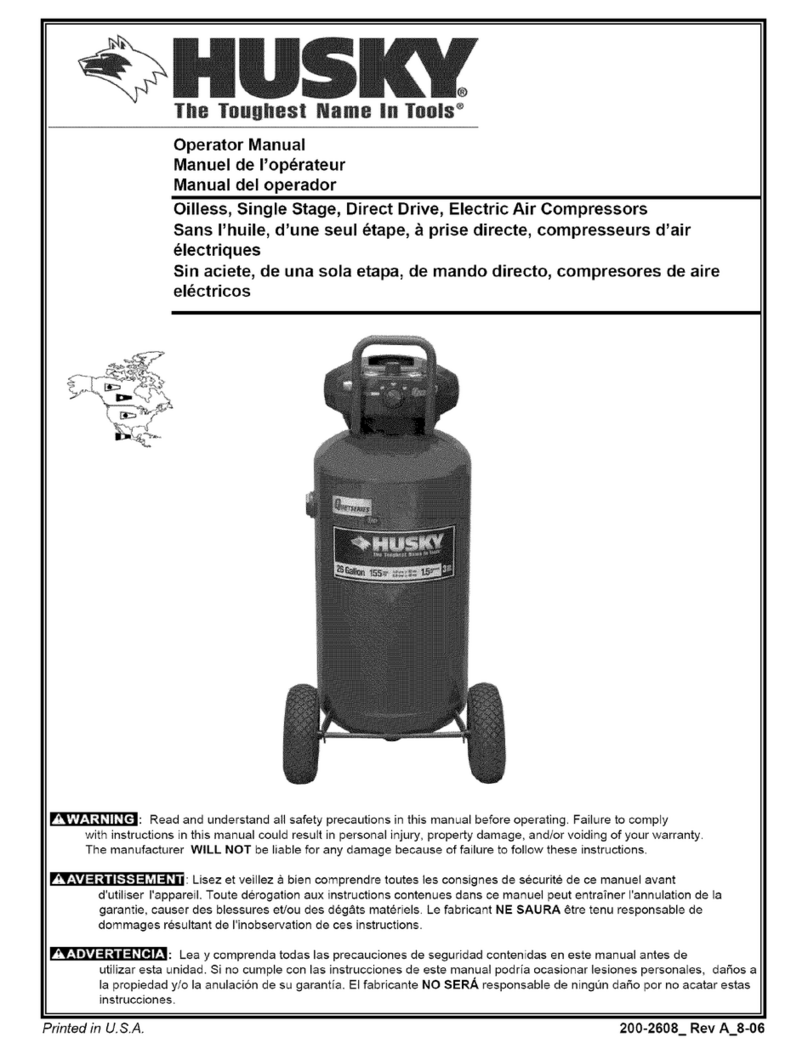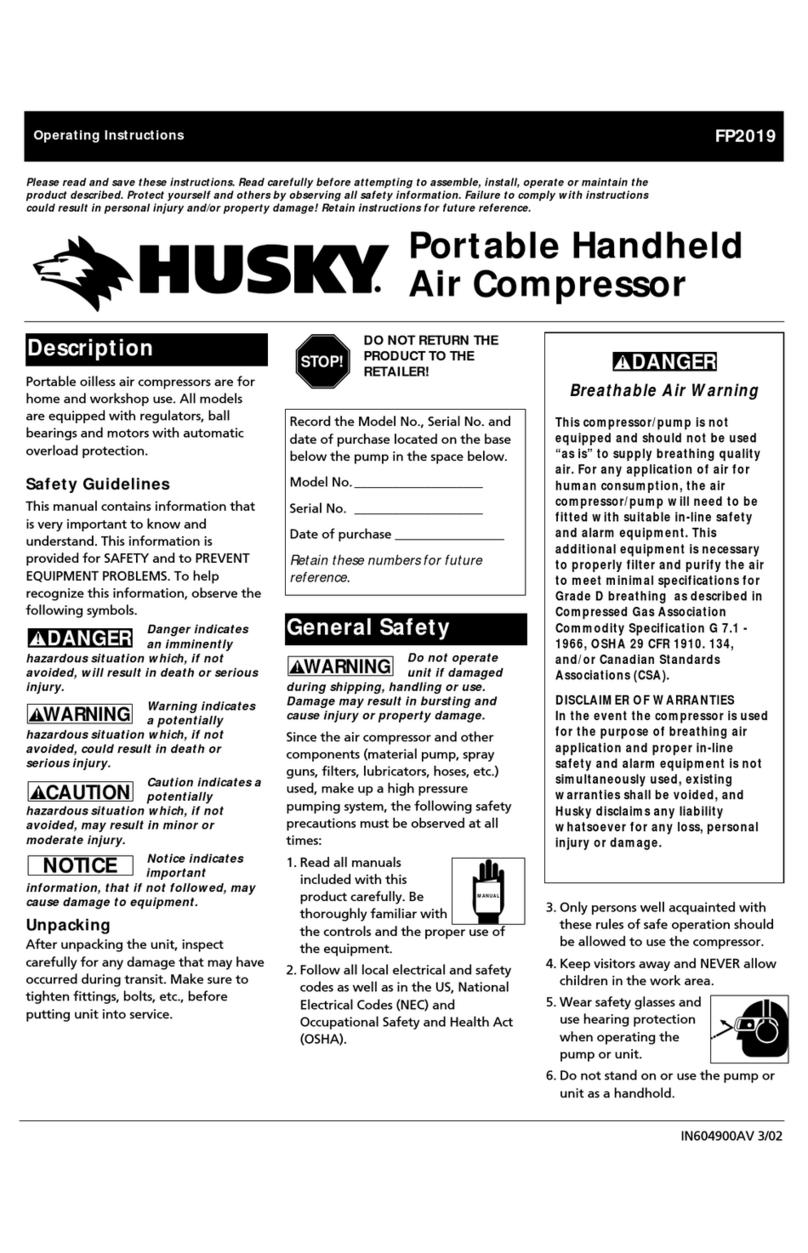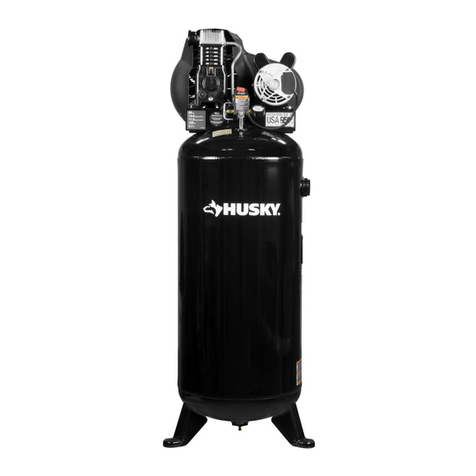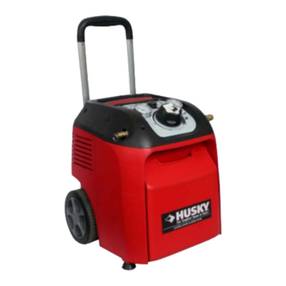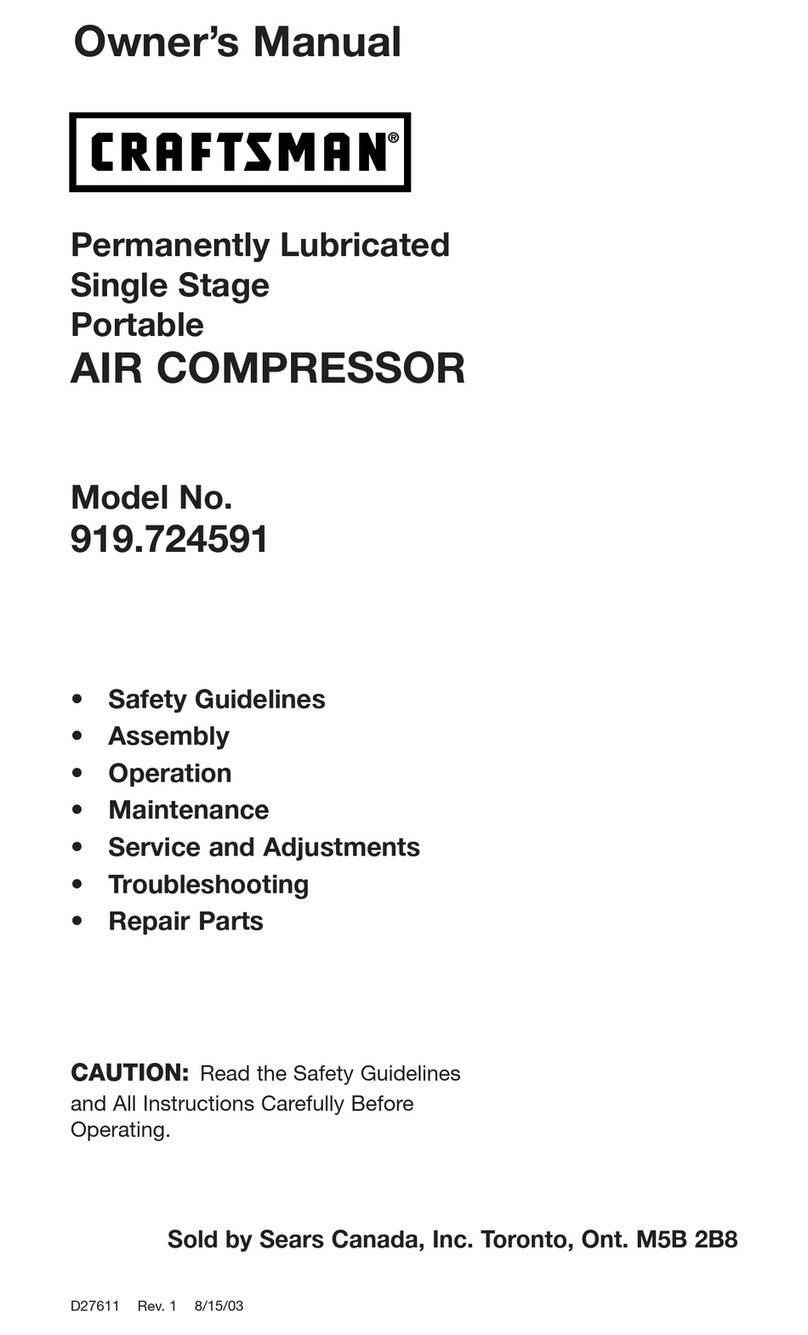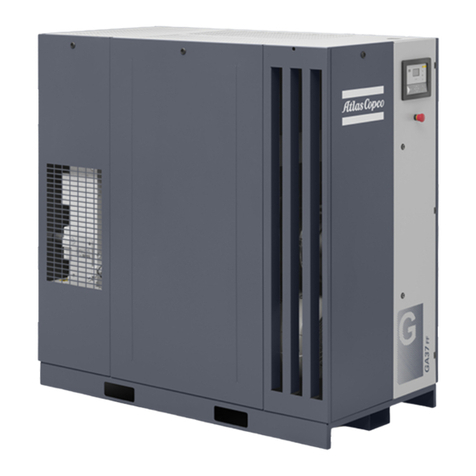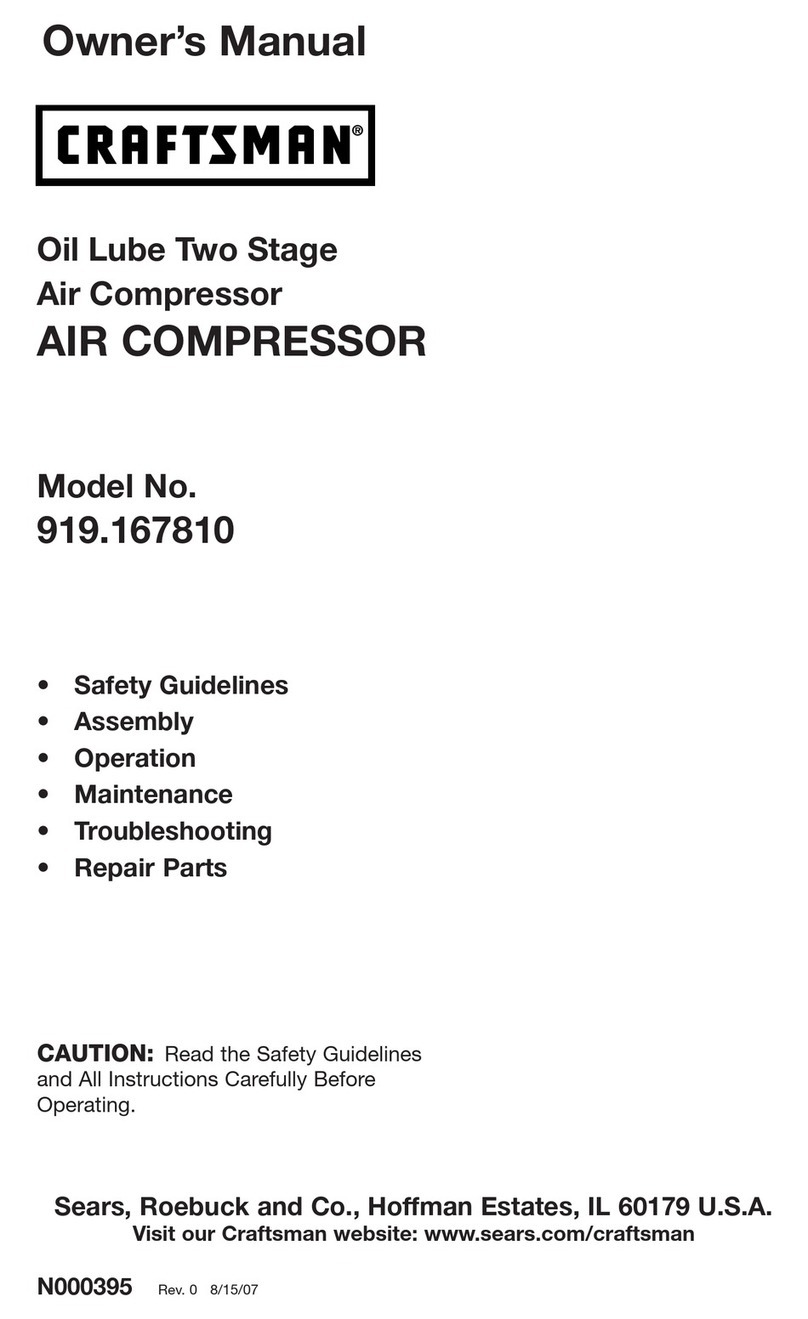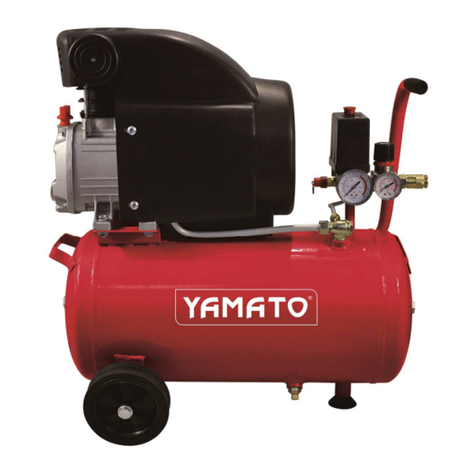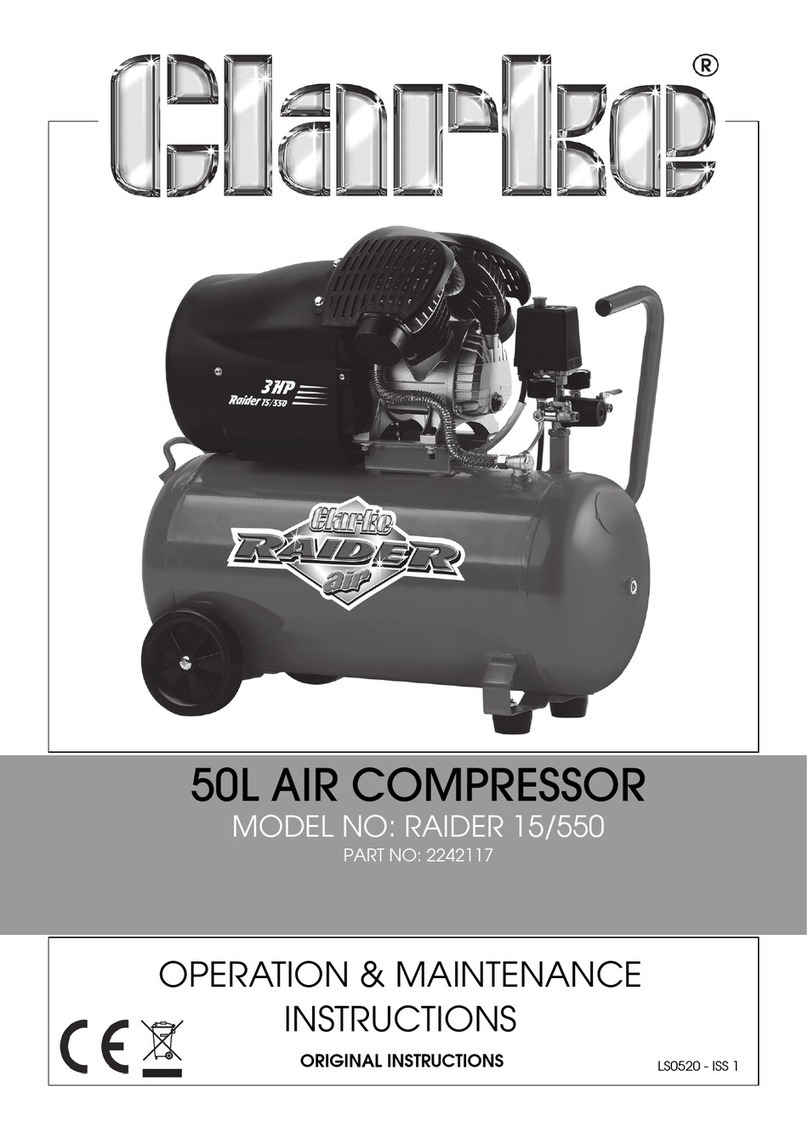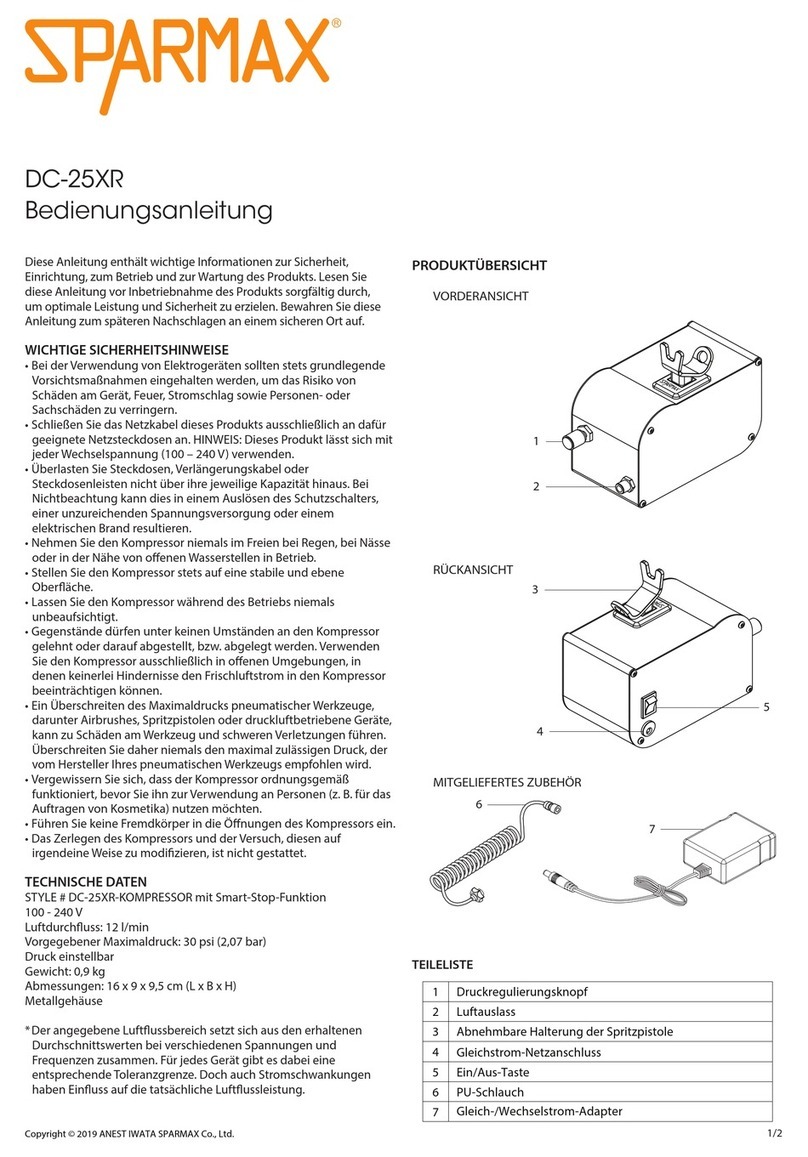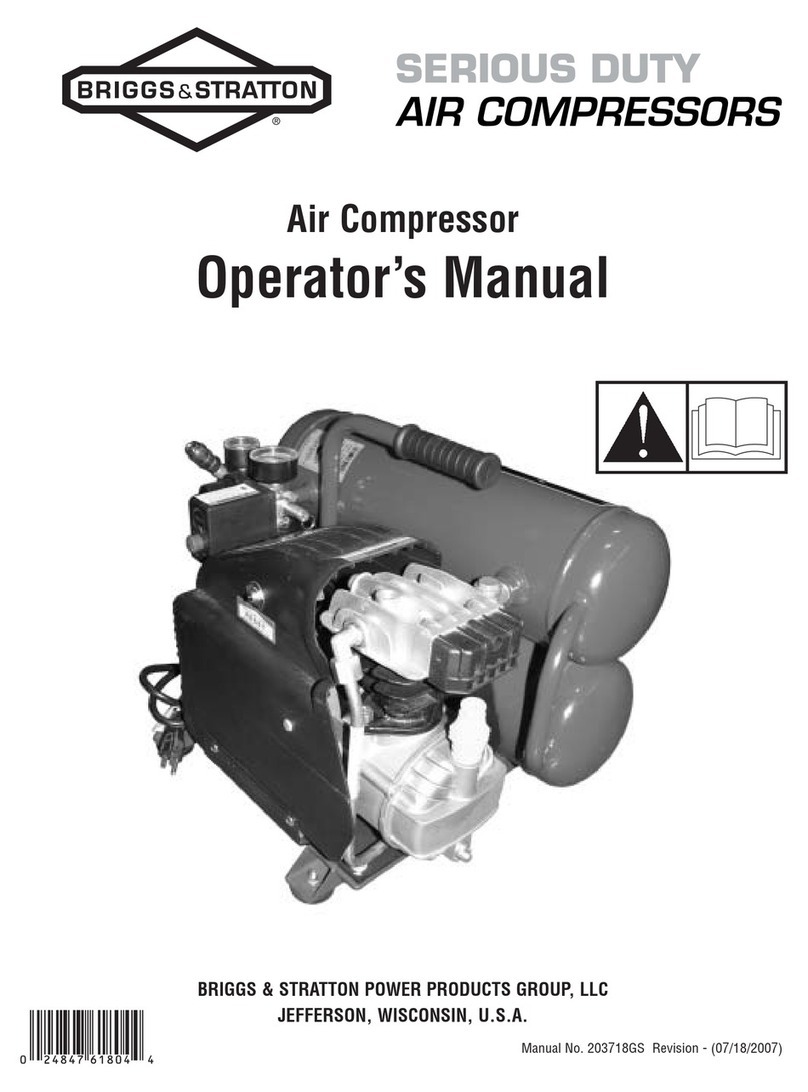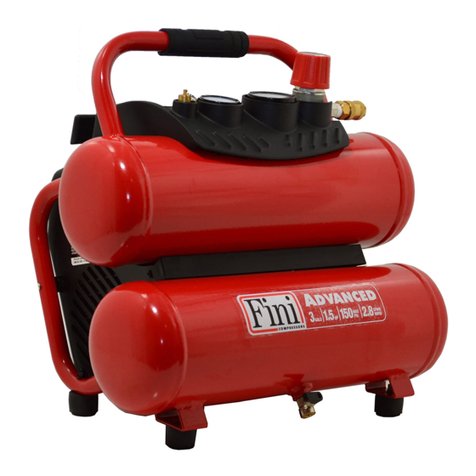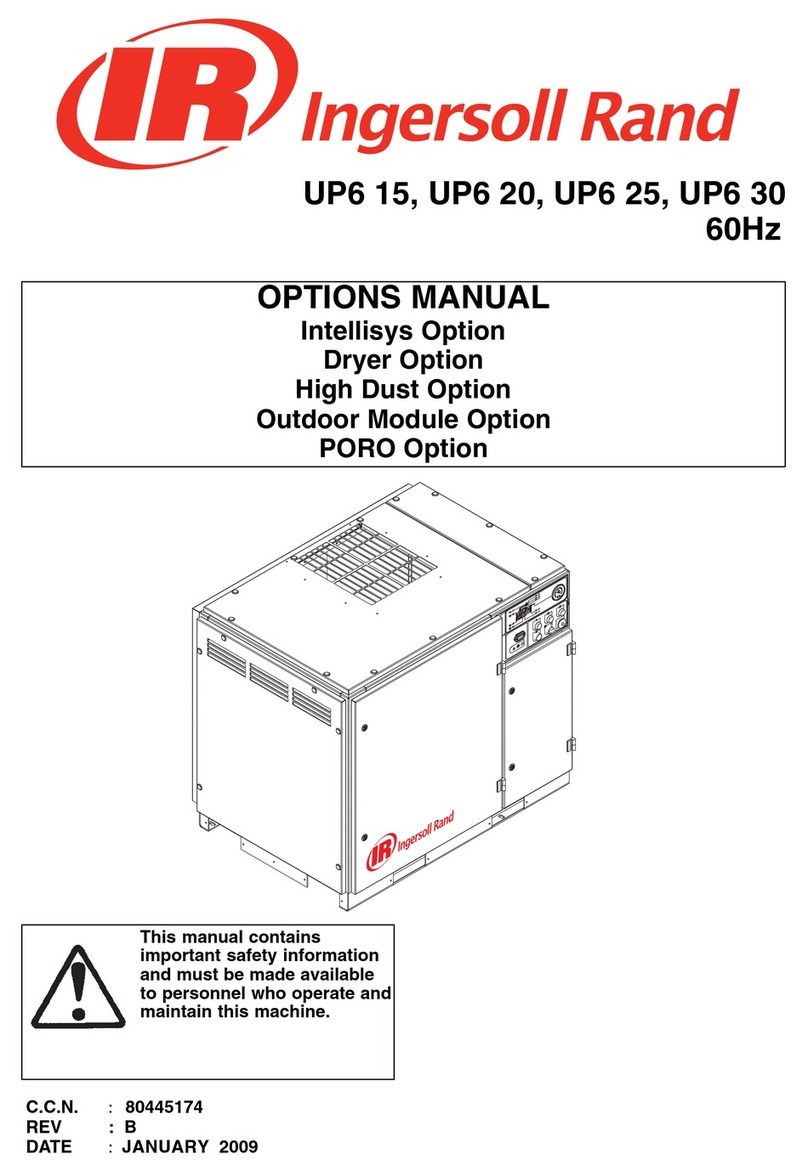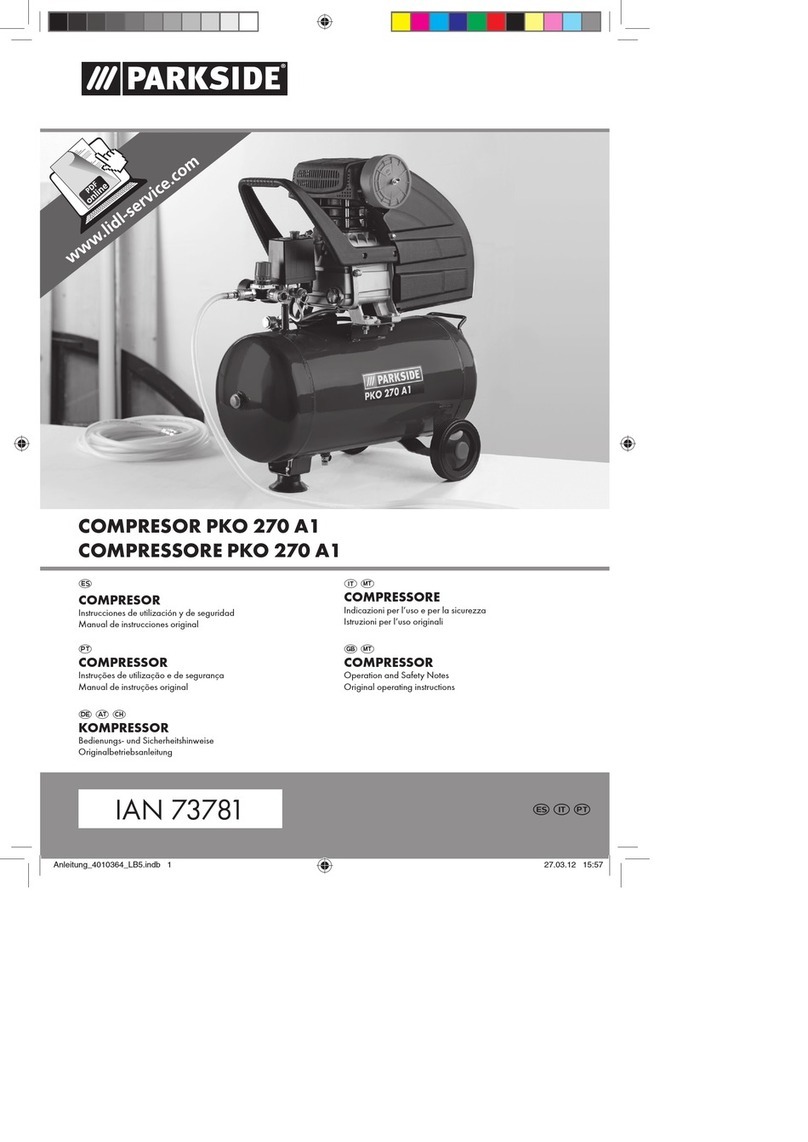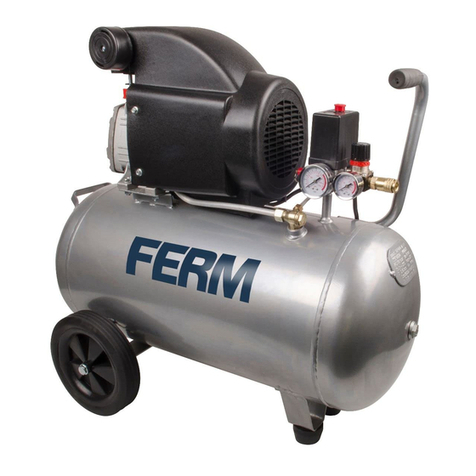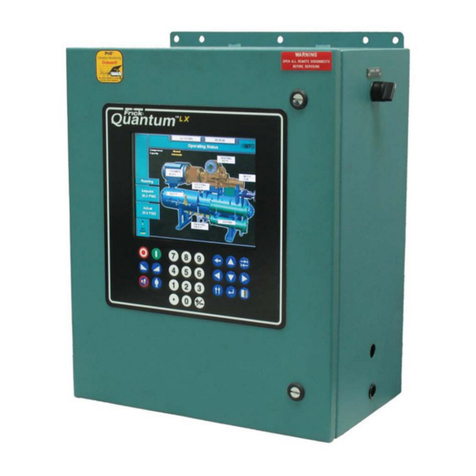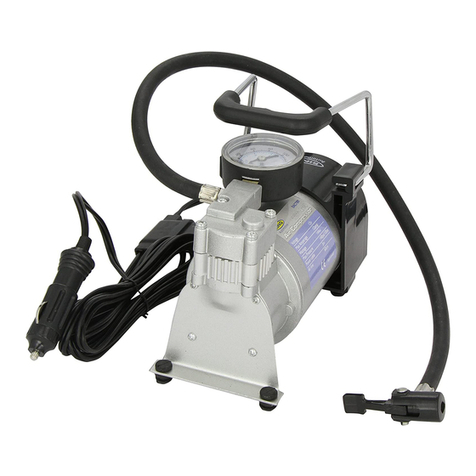
gKnow your power tool.Readoperator’smanualcarefully.
Learnitsapplicationsandlimitations,aswellasthespecic
potentialhazardsrelatedtothistool.Followingthis rulewill
reducetheriskofelectricshock,re,orseriousinjury.
gDrain tank of moisture after each day’s use. If unit will
not be used for a while, it is best to leave drain valve open
until such time as it is to be used. This will allow moisture
to completely drain out and help prevent corrosion on the
inside of tank.
gRisk of Fire or Explosion.Onlysprayammableliquids
suchaspaintsorlacquers.Neversprayammableliquids
inaconnedarea.Sprayareamustbewellventilated.Do
notsmokewhilesprayingorspraywheresparkorameis
present. Keep compressors as far from the spraying area
aspossible,atleast15feetfromthesprayingareaandall
explosive vapors.
gRisk of Bursting.Donotadjustregulatortoresultinoutput
pressure greater than marked maximum pressure of
attachment. Do not use a pressure greater than maximum
rated pressure of compressor.
gIf connected to a circuit protected by fuses, use time-
delay fuses with this product.
gTo reduce the risk of electric shock, do not expose to
rain. Store indoors.
gInspect tank yearly for rust, pin holes, or other
imperfections that could cause it to become unsafe.
Never weld or drill holes in the air tank.
gMake sure the hose is free of obstructions or snags.
Entangled or snarled hoses can cause loss of balance or
footing and may become damaged.
gUse the air compressor only for its intended use. Do
not alter or modify the unit from the original design or
function.
gAlways be aware that misuse and improper handling of
this tool can cause injury to yourself and others.
gNever leave a tool unattended with the air hose attached.
gDo not operate this tool if it does not contain a legible
warning label.
gDo not continue to use a tool or hose that leaks air or
does not function properly.
gAlways disconnect the air supply and power supply
before making adjustments, servicing a tool, or when a
tool is not in use.
gDo not attempt to pull or carry the air compressor by
the hose.
gYour tool may require more air consumption than this
air compressor is capable of providing.
gNever store tool with air connected. Storing the tool with
airconnectedcanresultinunexpectedringandpossible
serious personal injury.
gAlways follow all safety rules recommended by the
manufacturer of your air tool, in addition to all safety
rules for the air compressor. Following this rule will
reduce the risk of serious personal injury.
gNever direct a jet of compressed air toward people or
animals. Take care not to blow dust and dirt towards
yourself or others. Followingthisrulewillreducetherisk
of serious injury.
gProtect your lungs. Wear a face or dust mask if the
operationisdusty.Followingthisrulewillreducetherisk
of serious personal injury.
gDo not use this air compressor to spray chemicals. Your
lungs can be damaged by inhaling toxic fumes. A
respirator may be necessary in dusty environments or when
sprayingpaint.Donotcarrywhilepainting.
gInspect tool cords and hoses periodically and, if
damaged, have repaired at your nearest Authorized
Service Center. Constantly stay aware of cord
location.Followingthisrulewillreducetheriskofelectric
shockorre.
gNever use an electrical adaptor with this grounded plug.
gCheck damaged parts. Before further use of the air
compressor or air tool, a guard or other part that is
damaged should be carefully checked to determine
that it will operate properly and perform its intended
function. Check for alignment of moving parts,
binding of moving parts, breakage of parts,
mounting, and any other conditions that may affect
its operation. A guard or other part that is
damaged should be properly repaired or replaced by
an authorized service center. Following this rule will
reducetheriskofshock,re,orseriousinjury.
gMake sure your extension cord is in good condition.
When using an extension cord, be sure to use one
heavy enough to carry the current your product will
draw. A wire gauge size (A.W.G.) of at least 14 is
recommended for an extension cord 50 feet or less in
length. A cord exceeding 100 feet is not recommended.
If in doubt, use the next heavier gauge. The smaller
the gauge number, the heavier the cord. An undersized
cord will cause a drop in line voltage resulting in loss of
power and overheating.
gSave these instructions.Refertothemfrequentlyanduse
them to instruct others who may use this air compressor. If
you loan someone this tool, loan them these instructions
also.
Page 3
SPECIFIC SAFETY RULES
